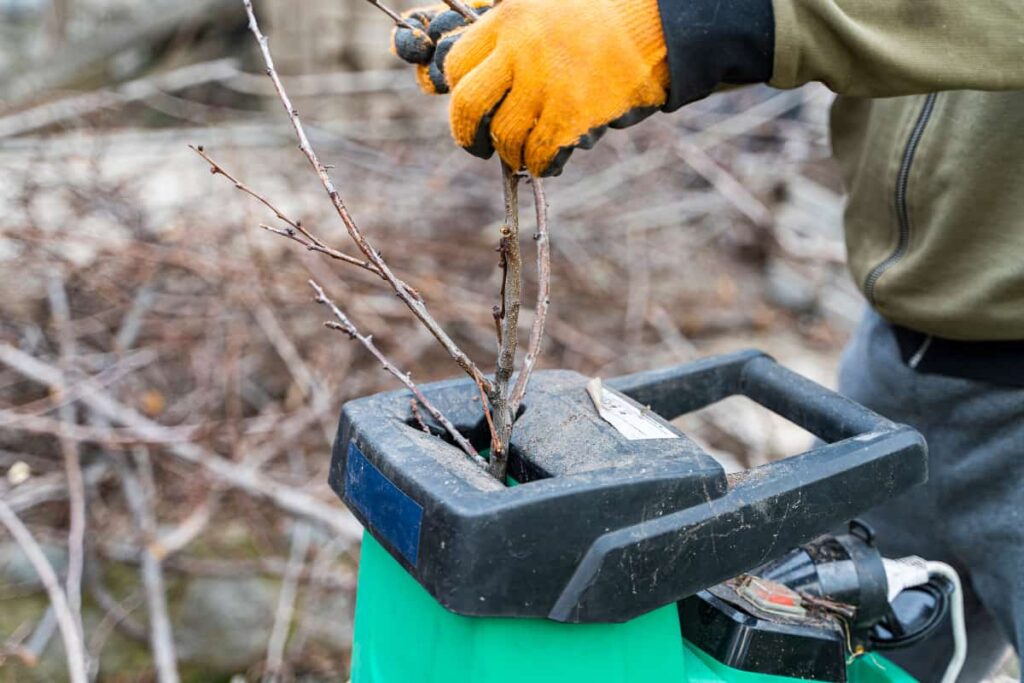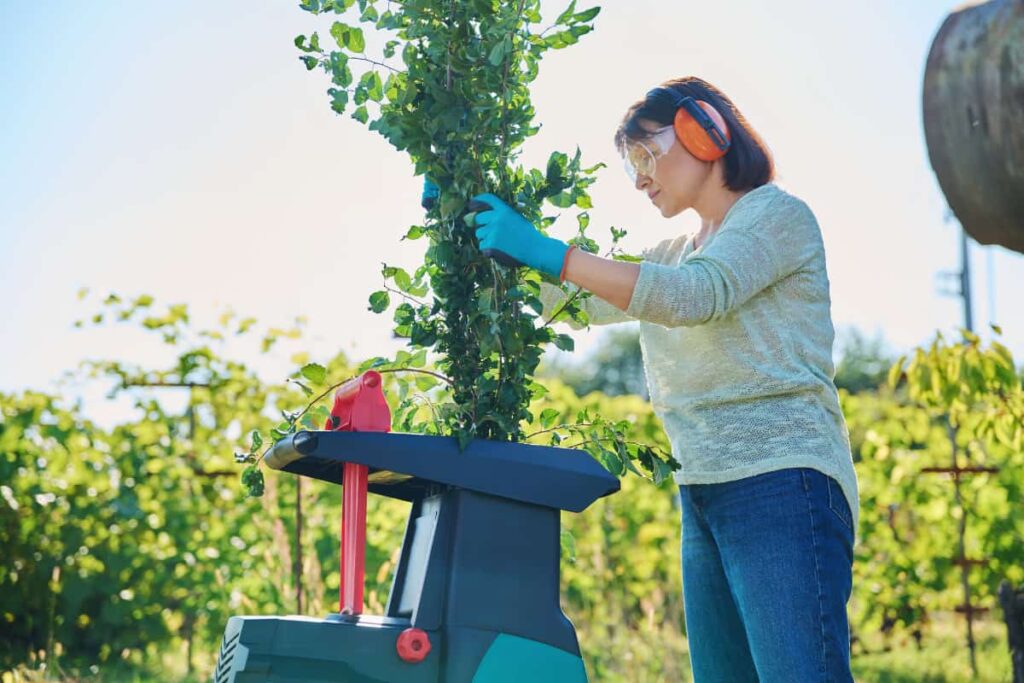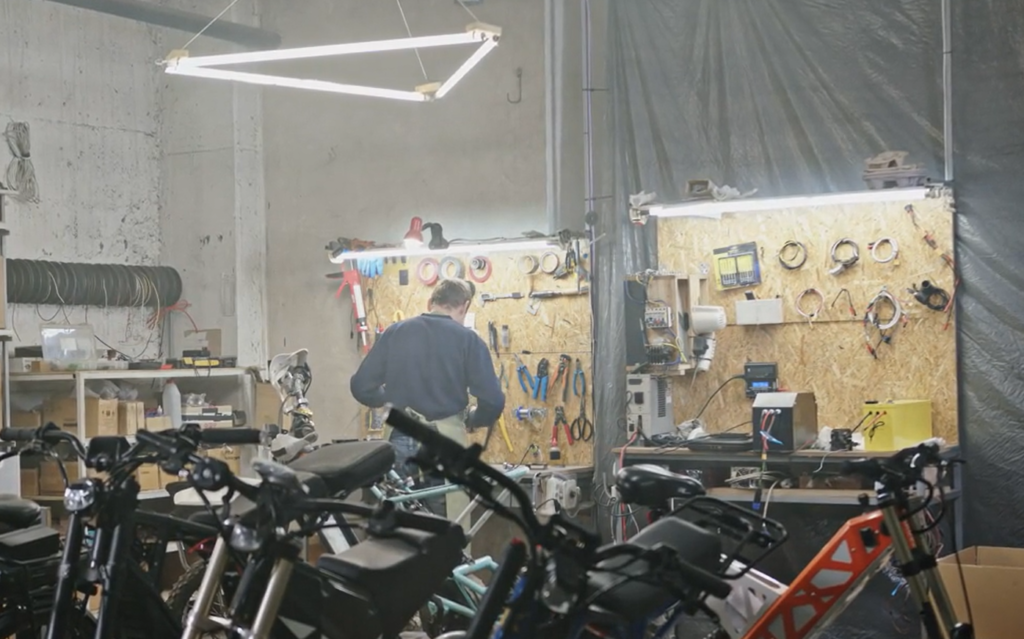A plant shredder is a practical, economical and environmentally-friendly solution that's proving to be an invaluable companion for gardens and gardeners. Depending on the size of your outdoor space, the types of plants to be shredded, your preferences in terms of shredded material and the use you plan to make of it, there's a shredder that's ideal for you. Whether it's electric or internal combustion, with blades, a rotor or a turbine, we'll show you all the possible choices, the precautions to take and a few simple steps to maintain it.
What are the reasons for buying a shredder?
Looking after your garden means collecting dead leaves, branches from trees and shrubs, as well as vegetable garden plants and wilted flowers. This green waste can quickly accumulate and become overgrown. Burning it is prohibited, so it has to be taken to a waste collection centre, which is not always easy. To get rid of it, you have to take it to a waste collection centre, which isn't always easy. However, there is an interesting alternative solution in several respects: the plant shredder. This practical, economical and environmentally friendly device has everything you need to convince you.
Do you want to get rid of your rubbish without making multiple trips to the local waste collection centre? The shredder is the ideal solution for reducing the initial volume of your waste by up to ten times.
Are you a fan of composting and mulching in your garden? By recycling your waste, you can make significant savings by creating high-quality mulch, depending on the type of plant you use. Some plants can be shredded and mixed with grass clippings and kitchen waste to form a rich compost. Others will be used directly to cover the soil. As for the twigs and small branches that are still fresh, they will be used to make a much sought-after mulch, also known as RCW (Ramial Fragmented Wood).
What criteria should I follow when selecting a shredder?
These days, there are a multitude of garden shredder models to choose from. To make your choice, you'll need to consider a few specific aspects. First of all, think about the size of your green space, the types of plants you want to shred and the type of shred you want to obtain. These factors will help you choose between an electric or thermal shredder and decide on the cutting system, be it rotating blades, a rotor or a turbine. These may be technical considerations, but they're actually quite easy to grasp. Here's a quick overview of the essential points...
Should I choose an electric or thermal shredder?
Electricity :
- The electric shredder is less powerful than the internal combustion model, with a maximum power of around 3000 W, half that of an internal combustion model.
- It handles thin branches, varying between 20 and 40 mm depending on the cutting device used.
- What's more, it's often lighter and therefore easier to handle, but requires an electrical socket nearby.

Heat energy :
- Thermal shredders offer greater power, with models reaching up to almost 7000 W.
- This means it can handle larger branches, up to 90 mm in diameter on some models.
- What's more, it is usually stronger, faster and more autonomous, but it is also heavier, more expensive, noisier and more polluting.

Electric shredders are best suited to small areas and short, specific jobs. Thermal shredders, on the other hand, are ideal for gardens larger than 300 m² and for treating large volumes of vegetation.
Which cutting device?
| Type of system | Benefits | Disadvantages |
|---|---|---|
| Rotary blade table |
- Quickly eliminates small, flexible plants. - Provides extremely fine shredding, ideal for mulching. |
- Not suitable for hardwood species. - Emits a lot of noise. - Tendency to clog frequently. |
| Rotor system |
- Can cut branches of intermediate diameter (up to 50 mm depending on version). - Generates larger fragments, ideal for composting. - Works with a slower flow. - Emits less noise. - Less prone to blockages. - Easy to clean. |
- Has more difficulty with fresh debris and foliage. |
| Turbine mechanism |
- Able to handle medium and hard woods without difficulty. - Finer shredding, ideal for making mulch and composting. |
- Higher cost. - Heavier and bulkier. |
In short, your choice between these three cutting systems will depend on the desired processing speed, the type of vegetation to be treated and the expected size of the waste produced.
Other factors also need to be taken into account
The main selection criteria include the energy used, whether electric or thermal, the type of wood to be processed, whether soft or hard, and the size of the plants, whether fine or large in diameter. The fineness of the shredded material, whether fine or coarse, also plays a crucial role. Other factors may also guide your decision.
- Ambient noise, which is particularly important in urban areas or near vulnerable neighbours, must be taken into account.
- Weight becomes crucial if you have a large plot of land and need to transport your equipment frequently.
- Features such as a useful collection box, an extra pipe for thick branches, wheels for easy movement, optimised ergonomics, an automatic mechanism for faster processing, an automatic unloading system and the option of adjusting the thickness of the shredded material.
What are the steps involved in using a shredder?
Before using your shredder, take the time to familiarise yourself with the equipment by reading the user manual carefully. If you need any further information, don't hesitate to ask our in-store advisers.
Appropriate safety measures
- Place your appliance on a stable surface, away from children and pets, in an area free of clutter.
- As soon as you leave the room, even for a short time, be sure to switch off the appliance.
- In the event of a malfunction or obstruction, stop the engine and unplug all electrical equipment before carrying out any work.
- Dress in tight clothing, wear thick gloves that fit snugly, protect your eyes with goggles or a face shield, and use earplugs or noise-cancelling headphones.
- Noise levels must be taken into account. Respect your neighbours by using your equipment at appropriate times.
Maintenance
Regular maintenance and the care taken to preserve equipment and infrastructure are essential to ensure their smooth operation and extend their lifespan. Proper maintenance helps to prevent breakdowns, avoid costly repairs and ensure the safety of users. It also encourages more efficient use of resources and contributes to the sustainability of facilities.
By taking regular and meticulous care of your shredder, you'll ensure that your equipment lasts a long time with optimum performance and increased safety.
- Once the equipment has been used, wait for it to cool down before removing any residue that may be clinging to or obstructing it.
- Using a soft brush, clean the cutting system and vents when the equipment is dry.
- Clean the motor grille by sucking up sawdust and dust to clear it, if necessary.
- Check the condition of the blades often - alternate their position if necessary, and sharpen them when both cutting edges become dull.
- Also inspect the wires and the various components.
- Check frequently and tighten the screws if necessary.
- Coat metal surfaces with oil to protect them from corrosion.
- Store your equipment in a dry place.
Frequently asked questions
Can dry branches be shredded?
Yes, rotor and turbine systems are capable of shredding dry branches. The rotary plate with blades is less effective for this type of material.
Can wet wood be shredded?
Wet wood can be a problem for all types of shredder. The rotary blade plate and rotor system can have difficulty with wet wood due to clogging. The turbine mechanism, although more efficient, can also encounter difficulties, but is generally more suitable for processing different types of wood, including wet wood.




